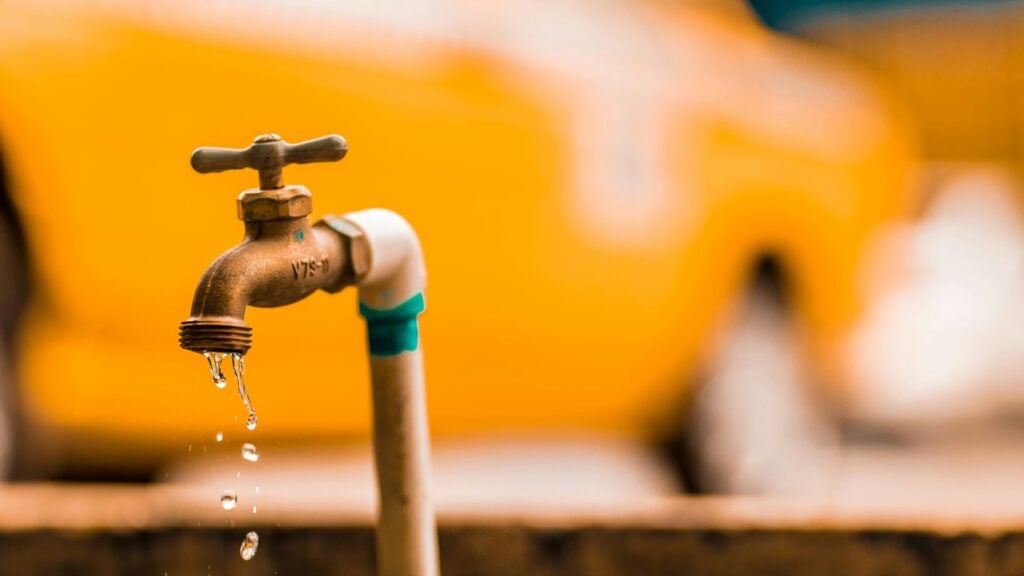
Imagine waking up one morning to a flooded basement, water creeping under your door, or worse—your property’s foundation beginning to crack due to undetected leaks. It’s a nightmare, one that could have been easily avoided with the right preventive measure in place. But there’s good news: this isn’t an inevitability. A simple, effective tool exists to protect us from such costly disasters—a leak detector.
These devices aren’t just for giant industrial complexes or large-scale commercial buildings. They’re for every property, every home, and every business that values its infrastructure. A leak detector is often seen as a luxury or something for “just in case.” But when you stop to think about the potential damage caused by a slow, unnoticed leak, you realize it’s a necessity. In fact, a single undetected leak can waste hundreds of gallons of water a day, leading to exorbitant water bills and damage that could cost thousands to repair.
At its core, a leak detector is a device designed to identify the presence of leaks in water systems—whether it’s plumbing in your home, an industrial system, or even irrigation networks. These devices are engineered to alert you the moment a leak is detected, preventing further damage and allowing you to take immediate action. Most modern detectors are designed to be easy to install and operate, offering real-time alerts that can be linked to your smartphone or building management system.
But what sets a good leak detector apart from the rest? It’s not just about identifying leaks but also minimizing risk. Think about the savings in maintenance costs, the peace of mind knowing that you can address problems before they escalate, and the environmental impact of preventing wasteful water loss. A leak detector isn’t just a tool; it’s an investment in the health of your property and your wallet.
We all know that prevention is better than cure, but in the case of leaks, prevention can mean the difference between a minor inconvenience and a full-blown disaster. According to a study by the Environmental Protection Agency (EPA), the average American household wastes more than 10,000 gallons of water per year due to leaks. That’s enough to fill a backyard swimming pool. Leaks aren’t always obvious, either—they can develop slowly, hidden behind walls or under floors, going unnoticed until it’s too late.
This is where a leak detector comes in. It offers you an early warning system, giving you the chance to act before the situation spirals out of control. Whether you’re managing a building, overseeing a facility, or simply maintaining your home, having one of these devices could save you from significant repair costs, water damage, and even the legal or insurance nightmares that follow large-scale water damage.
So, how do leak detectors actually work? In general, they rely on a range of sensors designed to detect the slightest changes in water pressure or the presence of moisture. Some of the most advanced systems integrate acoustic sensors, which pick up the sound of water escaping from pipes. Others use advanced humidity and temperature sensors that can pick up on unusual moisture patterns indicative of a leak.
Once the device detects something abnormal, it can trigger an alarm, send a notification to your phone, or even shut off the water supply in extreme cases. Some models even offer cloud-based diagnostics, giving you a remote overview of your plumbing system’s health, anywhere, anytime. This is a crucial aspect of modern leak detectors—they provide an easy way to stay in the loop, without needing to physically check every faucet or pipe.
If you’re ready to take the leap and install a leak detector, here’s a quick guide to get you started:
In today’s world, where every penny counts and every asset matters, installing a leak detector is one of the simplest and most effective ways to safeguard your property. It’s a small, proactive step that pays off in the long run. Whether it’s preventing a minor leak from turning into a major issue or simply providing peace of mind, the right leak detector can be the difference between disaster and protection. The question is—why wait for a flood when you can prevent it in the first place?
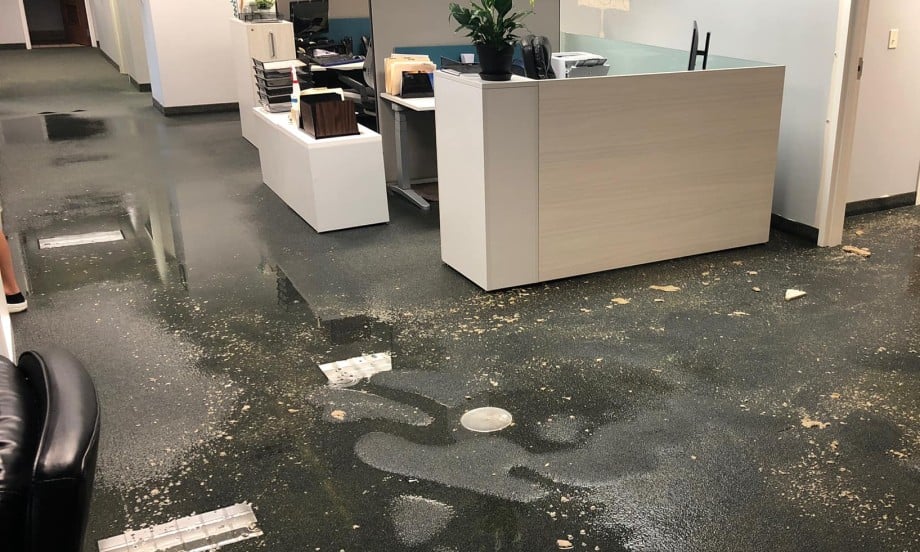
You’re making coffee, half-awake, when you notice that faint drip… drip… drip under the sink. It’s nothing major, you tell yourself – a few drops, maybe a loose pipe. You’ll fix it on the weekend.
Fast-forward two months. The floorboard’s warped, the cabinet door doesn’t close properly, and there’s a strange smell that Febreze can’t fix. Welcome to the world of water leaks – small, sneaky, and surprisingly destructive.
The thing about leaks is they’re patient. They wait quietly, often behind walls, under floors, or around fittings, while slowly transforming your house into an indoor swamp.
Most homeowners underestimate water. It doesn’t take a flood to cause major damage – just a tiny, persistent drip. Water has one mission: to go where it shouldn’t.
Here’s what that seemingly harmless trickle is really doing while you ignore it:
In fact, according to insurance data, the average household water-damage claim is around $11,000. That’s enough to buy 73 aquaHALT devices – each designed to stop the problem before it even begins.
There’s a fascinating thing about leaks – everyone knows they’re bad, but almost no one acts right away. Why? Because they don’t feel urgent… until they are.
When your roof leaks, you panic. When your pipe bursts, you panic. But when your sink slowly drips, you shrug. The irony? That drip can cause more long-term damage than either of those sudden disasters, because it quietly corrodes materials over time.
So if you’re thinking, “It’s just a few drops,” remember: those “few drops” might be the most expensive ones you ever ignore.
Leaks don’t exactly send invitations – but they do leave clues. Here are the telltale signs your home might be harboring a watery secret:
You haven’t started a backyard water park, but your bill looks like you did. A sudden spike usually means a hidden leak.
That “basement smell” upstairs isn’t normal. Moisture trapped in walls or under floors gives off that earthy, mildew-like odor.
Your walls are literally crying. Moisture trapped behind paint or paper causes bubbles, blisters, or peeling.
When wooden surfaces start bowing or curving, they’re soaking up moisture from somewhere nearby.
If you’ve cleaned it and it returns, that’s not bad luck – it’s a leak feeding it from behind.
Spot these signs early and you’re halfway to saving your home (and your weekend).
We’ve already talked about how leaks destroy materials, but let’s put numbers on the pain:
And that’s not counting the stress, time, and disruption of repairs. You’ll be living with fans, dehumidifiers, and that unforgettable “construction zone chic” aesthetic for weeks.
Compare that to $150 for a leak detection device. The math isn’t hard – but apparently, water loves teaching lessons the expensive way.
Some leaks are easy to see – a dripping faucet, a puddle under the washing machine. Others are experts at hide-and-seek.
They lurk behind drywall, beneath tiles, or inside ceilings, silently destroying things from within. By the time you notice a stain, it’s already been there for weeks.
That’s why early detection isn’t just helpful – it’s everything. The faster you find a leak, the less damage it can do.
Here’s where aquaHALT, the smart (but delightfully simple) leak detection device from waterAUTOMATION, earns its cape.
It doesn’t need Wi-Fi, Bluetooth, or a PhD in smart-home setup. It runs on 2×AA batteries and sits quietly under sinks, near washing machines, or behind your fridge – always listening, always ready.
When it senses even the smallest presence of water, it sounds the alarm before the damage starts. No complicated installation. No monthly fees. Just good, old-fashioned peace of mind wrapped in clever engineering.
Water doesn’t respect schedules – it leaks on Sundays, holidays, and when you’re away on vacation. That’s why aquaHALT never clocks out.
For less than what you’d spend on a dinner date, you get 24/7 protection that saves you from the world’s worst wake-up call: the sound of splashing where there shouldn’t be any.
Two AA batteries. One smart idea. Zero panic.
Let’s be real – no one brags about installing a leak detector. But everyone wishes they had one after the damage is done.
You don’t need to wait for a leak to ruin your day, your walls, or your savings account. Catch it early. Stop it fast. Sleep better.
That’s what aquaHALT does – quietly, constantly, and for just $150.
Because peace of mind shouldn’t cost thousands.
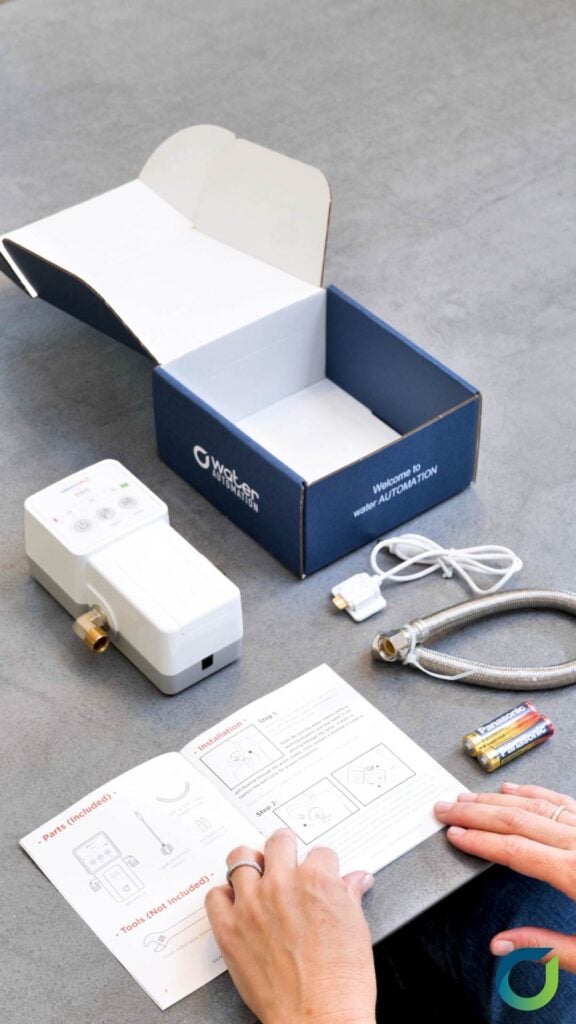
Remember when “smart home” devices were supposed to make life easier?
Now your toaster needs a Wi-Fi password, your light bulbs demand firmware updates, and your smart thermostat only listens if you speak fluent robot.
Leak detectors shouldn’t be like that – and with aquaHALT, they’re not.
At waterAUTOMATION, we believe home protection should be smart, but not complicated. You don’t need an app, a cloud account, or a three-hour YouTube tutorial. You just need something that works.
Somewhere between your fridge’s ice maker and your smart speaker that won’t stop listening, technology got a little… much.
aquaHALT brings sanity back.
This little $150 device does exactly what you want: detects water where it shouldn’t be and lets you know immediately.
No pairing, no syncing, no “device not found.”
Just you, two AA batteries, and pure peace of mind.
Setting up aquaHALT is so simple, it’s almost suspicious.
It’s like putting down a smoke detector for leaks – only quieter (until it’s not).
Leaks don’t check your connection before they strike. They don’t care if your router’s down or if your smart hub needs a reboot.
That’s why aquaHALT is proudly offline. It doesn’t need Wi-Fi, power, or your phone to function.
Even during a blackout, it stays alert, powered by its trusty AA batteries.
When it detects water, it sounds the alarm immediately – no buffering, no delay, no cloud dependency.
Think of your home like a map of potential mini-disasters. If water can flow there, it can also leak there.
Here are the best places to install your aquaHALT devices for all-around protection:
The most common source of leaks – out of sight, out of mind, and often out of hand.
Dishwashers, fridges with water lines, and washing machines love to leak just enough to ruin your floor slowly.
A ticking time bomb of pressure and heat. One burst valve and you’ve got an indoor hot spring.
If water’s getting in, you’ll want to know before it becomes a swimming pool.
Because tile grout and caulking age like milk, not wine.
By covering these areas, you turn your home into a leak-free fortress.
Once placed, aquaHALT just works. No maintenance reminders, no subscription renewals, no app notifications telling you it’s lonely.
It’s the kind of product you forget exists – until it saves you thousands.
And that’s the point. Real smart technology is the kind you never have to think about.
A lot of companies want to sell you “connected” everything – connected fridges, connected toothbrushes, probably connected socks next year.
But sometimes, the smartest solution is the simplest one. aquaHALT doesn’t compete for Wi-Fi bandwidth or demand voice commands. It just listens for water – 24/7, quietly and faithfully.
No apps. No wires. No nonsense.
Your home deserves protection that’s dependable, not demanding. aquaHALT brings leak detection back to basics – simple, effective, and completely foolproof.
Because the best tech isn’t the one that’s loudest, flashiest, or most complicated.
It’s the one that quietly protects your home while you go about your day.
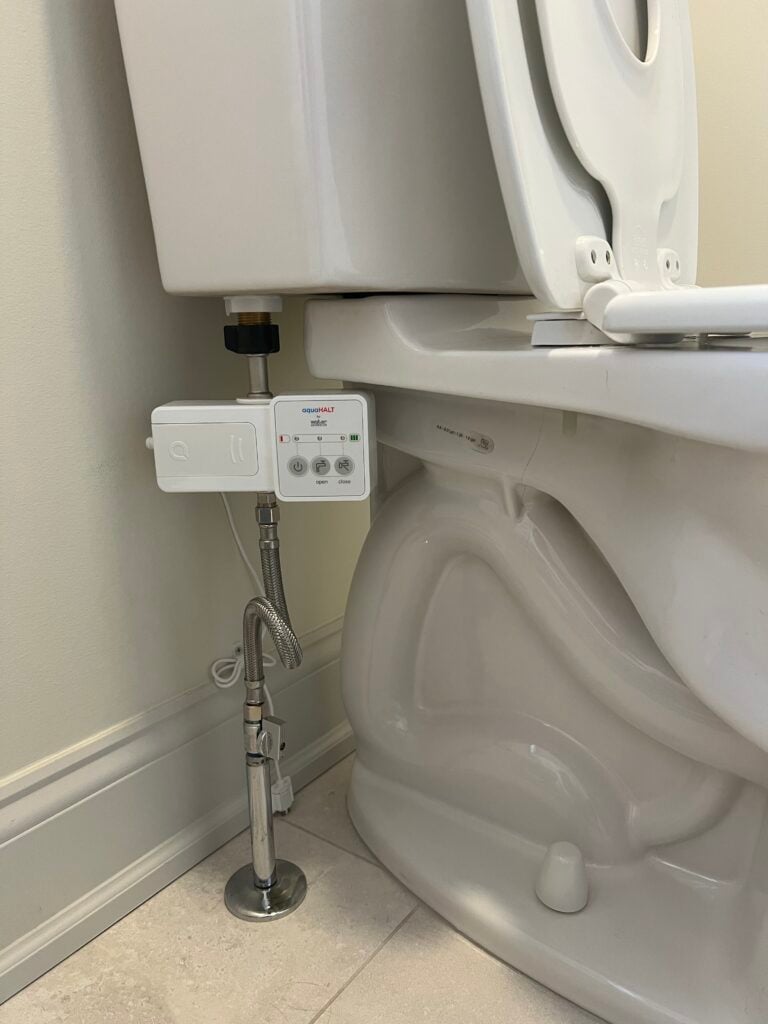
Let’s face it – owning or renting a property comes with enough stress already.
Mortgages, maintenance, insurance, bills… and now you’re supposed to worry about water leaks too?
Good news: you don’t need to spend thousands on a “smart home system” that talks more than it works.
You just need one simple, affordable device that quietly prevents one of the most common – and costly – home disasters.
That device is aquaHALT, from the team at water AUTOMATION.
It’s small, battery-powered, and laser-focused on one job: keeping your home dry.
Leaks aren’t polite. They don’t care if you own a penthouse or rent a tiny apartment – when water wants out, it’ll find a way.
And when it does, the damage adds up fast.
A burst washing machine hose can release hundreds of liters of water in an hour.
A dripping pipe can rot wood, destroy drywall, and feed mold like an all-you-can-eat buffet.
And fixing it? That’s a four-figure invoice waiting to happen.
You shouldn’t have to choose between protecting your home and protecting your bank account.
The $150 Solution That Does the Work of $10,000 Repairs
That’s where aquaHALT comes in – your affordable, no-nonsense answer to expensive problems.
For $150, you get a sleek, reliable leak detector that:
It’s the kind of purchase that quietly pays for itself the first time it prevents a soaked floor or mold cleanup.
aquaHALT isn’t just for homeowners. It’s for anyone who wants to avoid water damage – landlords, tenants, property managers, even Airbnb hosts.
If you manage multiple units, a few devices can protect every bathroom and kitchen under your care.
If you rent, you can place it under your sink or washing machine for peace of mind (and fewer awkward calls to your landlord).
No fancy systems. No contracts. No tech wizardry required. Just smart, affordable prevention.
When it comes to home protection, simple wins every time.
aquaHALT isn’t trying to be the next flashy “smart home” gadget – it’s designed to be invisible until it’s needed.
Set it. Forget it.
Let it listen quietly for leaks while you go about your day.
No updates. No subscriptions. No nonsense.
It’s easy to underestimate a small device – until it saves your kitchen, laundry room, or basement.
And while most homeowners assume water damage will never happen to them, the statistics tell another story:
For $150, you could join the minority – the people who don’t have to call their insurance company.
The real value of aquaHALT isn’t just in preventing damage – it’s in knowing your home is being protected 24/7.
Whether you’re at work, on holiday, or just sleeping soundly, it’s always on guard.
Because the best home security doesn’t just keep out intruders – it keeps out disaster.
At waterAUTOMATION, we built aquaHALT for people who value simplicity, reliability, and common sense.
Not everyone needs a smart hub. Not everyone wants another device to configure.
But everyone deserves a dry home.
aquaHALT proves that real innovation isn’t about bells and whistles – it’s about solving real problems affordably.
In the end, protecting your property doesn’t have to be fancy – it just has to work.
For $150, you can prevent thousands in damage, protect your belongings, and keep your stress levels low.
Two AA batteries.
Zero hassle.
One dry, happy home.
That’s aquaHALT – small device, massive peace of mind.
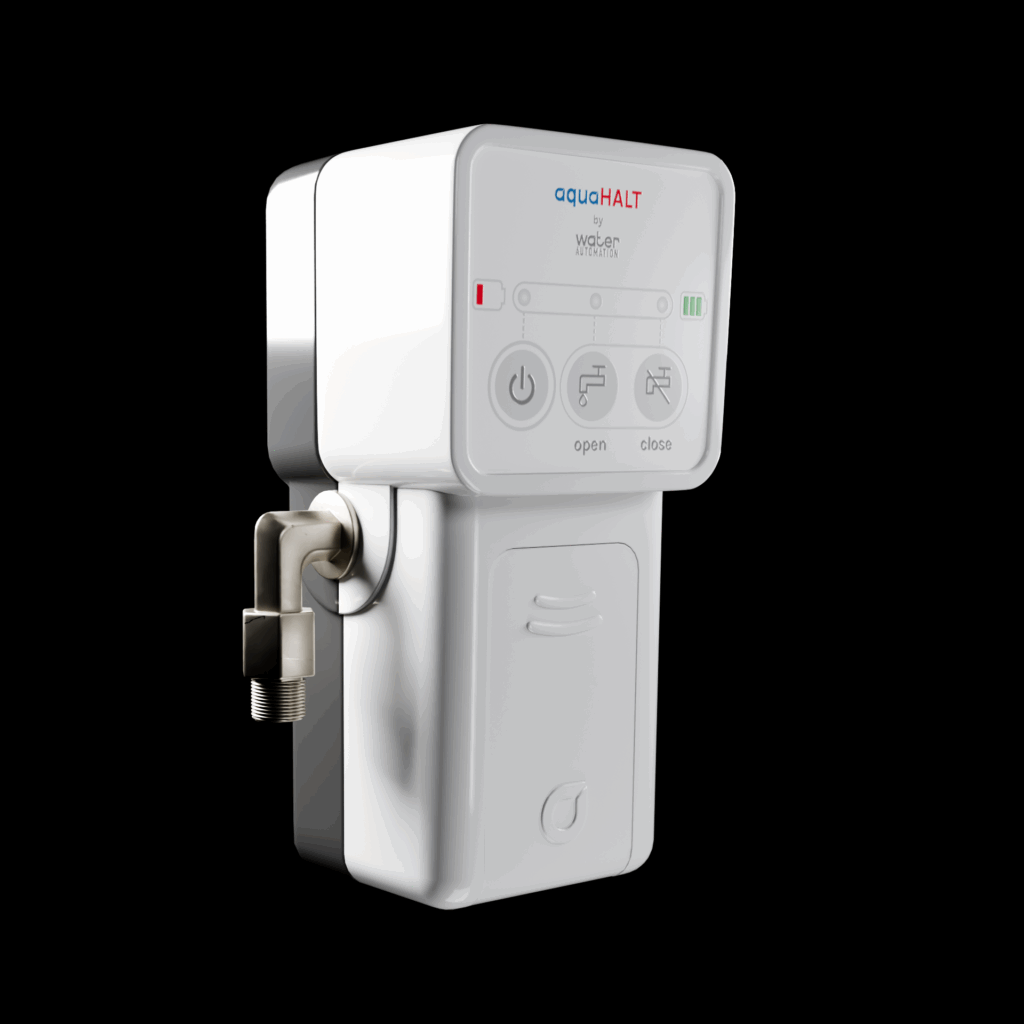
Nobody plans for water damage. It’s not like you wake up one morning and think,
“You know what my week needs? A burst pipe and a $6,000 repair bill.”
But water has a way of showing up uninvited. One tiny leak under the sink or behind the washing machine, and your relaxing weekend suddenly turns into a Home Depot marathon.
Fortunately, protecting your home from leaks doesn’t require a plumber, a contractor, or a meltdown. You can do it yourself – easily – and it starts with knowing where to look.
Water is sneaky. It doesn’t gush out dramatically every time – sometimes, it just seeps quietly, biding its time.
Here are the most common hideouts:
Finding leaks early isn’t glamorous – but neither is ripping out a moldy wall.
Here’s the thing: when a leak causes serious damage, insurance rarely makes it easy.
Most policies cover sudden leaks (like a burst pipe), but not gradual ones (like a slow drip over six months).
So if your bathroom turns into a science experiment because of a hidden leak, there’s a good chance your insurer will shrug.
Then come the forms, the photos, the emails that start with “We regret to inform you…”
If you’ve ever filed a water-damage claim, you know it’s about as fun as getting a root canal from an accountant.
That’s why early detection isn’t just about home maintenance – it’s about avoiding paperwork-induced rage.
A leak detector like aquaHALT doesn’t just prevent water damage – it prevents the argument that follows.
When you can show your insurance company that you took preventative measures, you’re not just covered – you’re credible.
It’s like telling them, “Look, I wasn’t negligent. I had backup.”
That tiny $150 device can be the difference between a denied claim and a “no problem, we’ve got you covered.”
If you can open a drawer and find two AA batteries, congratulations – you can install aquaHALT.
Here’s your entire to-do list:
That’s it. No drilling, no Wi-Fi setup, no technician visit.
You don’t even need to download an app – aquaHALT is 100% offline and proud of it.
A plumber is great after the disaster. But preventing one? That’s your job – and it’s easy.
For the cost of a dinner date, you can protect your kitchen, laundry, and bathroom from costly leaks.
Even better, you’ll have the satisfaction of saying, “I handled that,” when your neighbor is still on hold with their insurance company.
aquaHALT is designed for normal people, not tech geniuses or home-improvement influencers.
It’s prevention for everyone – whether you rent, own, manage properties, or just hate surprises.
The reason aquaHALT fits so well in the DIY world is because it’s not flashy – it’s functional.
Just a smart little device that listens for water and alerts you the moment something goes wrong.
Two AA batteries. Zero nonsense.
Imagine placing one under your sink and catching a leak before it soaks the cabinet.
Or discovering your washing machine hose was dripping before it warped the floor.
Or preventing a tenant’s “small leak” from turning into a month-long insurance battle.
That’s what aquaHALT does – it gives you time.
Time to fix the problem, call the plumber, or just shut the valve before it’s too late.
There’s something deeply satisfying about being proactive – especially when it saves you thousands and a massive headache.
Water doesn’t wait. So don’t wait on water.
Do it yourself. Keep your home dry. And make your insurance company slightly less smug.